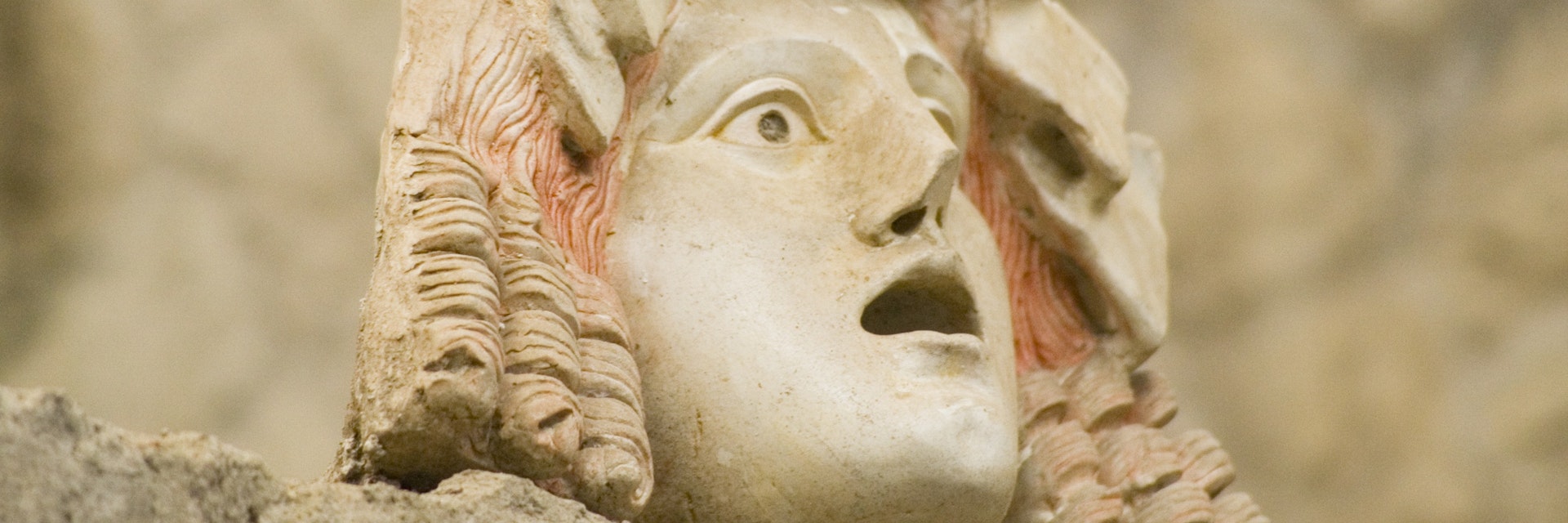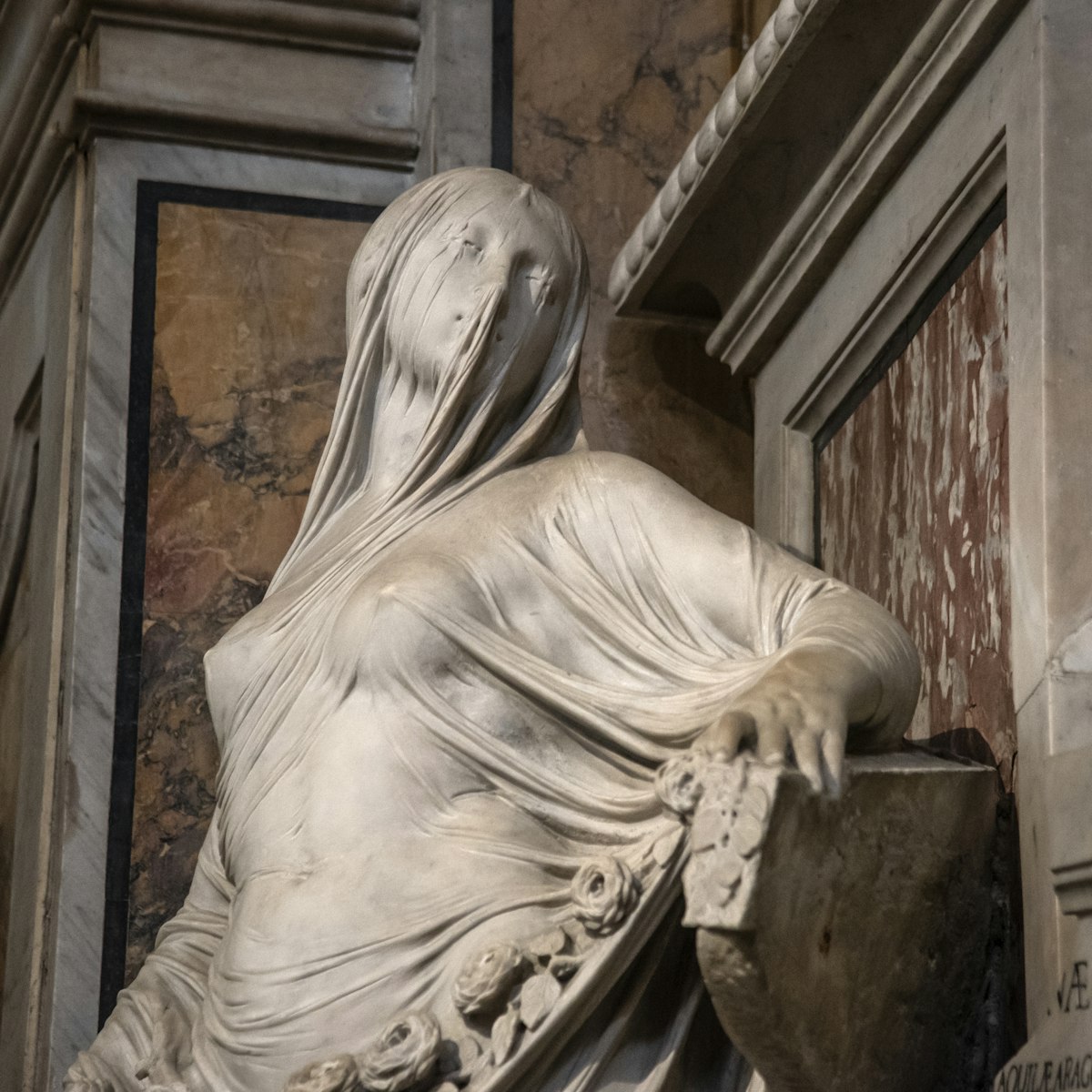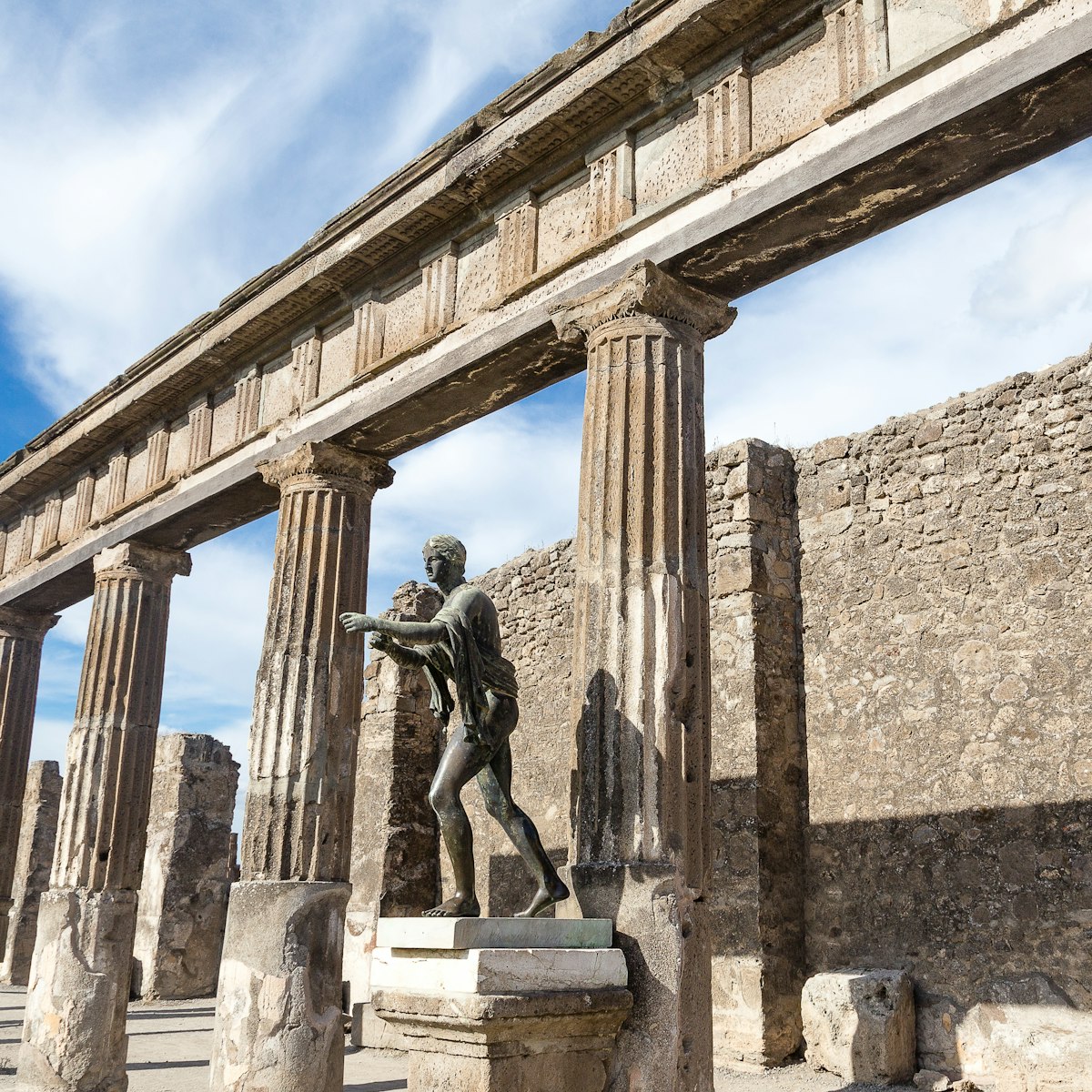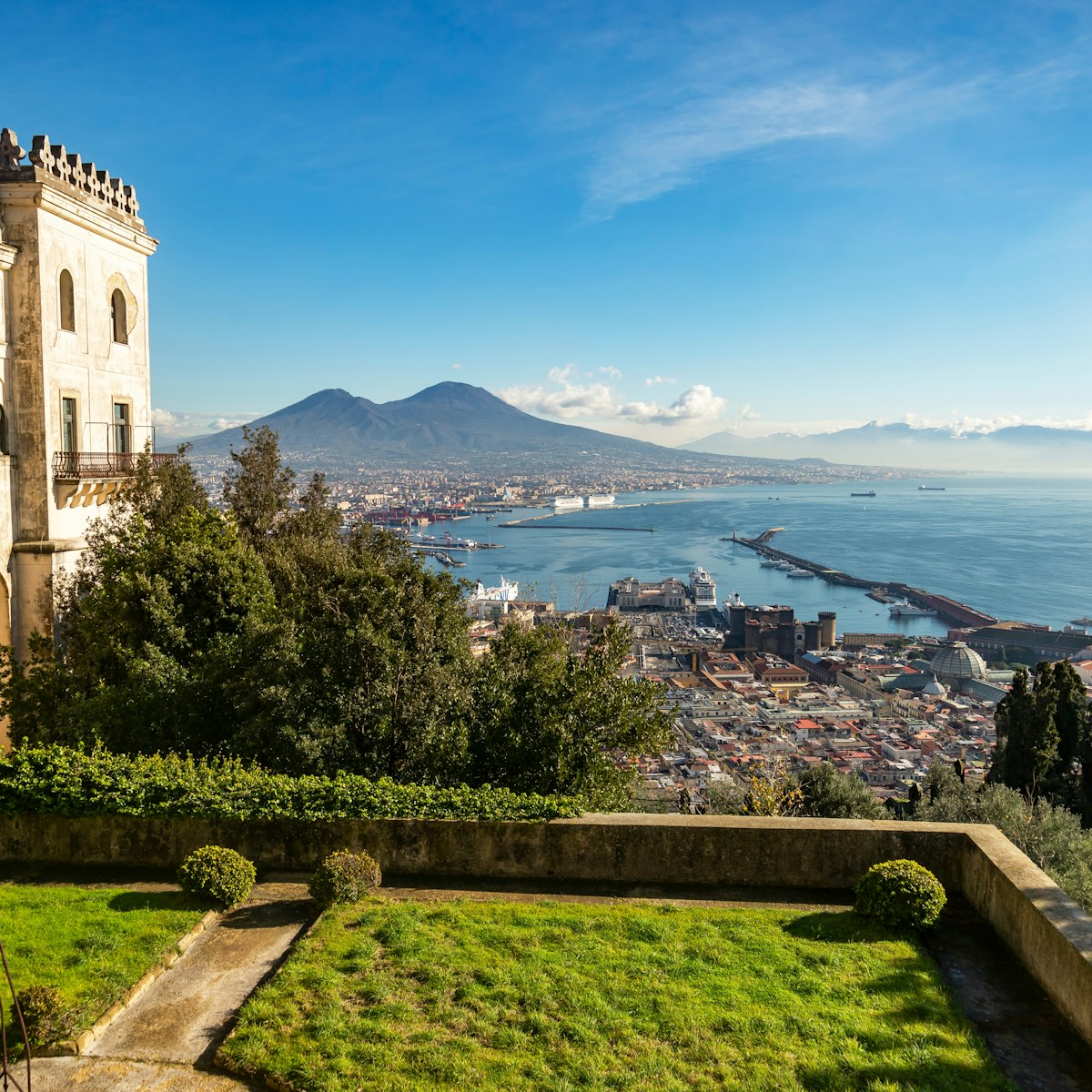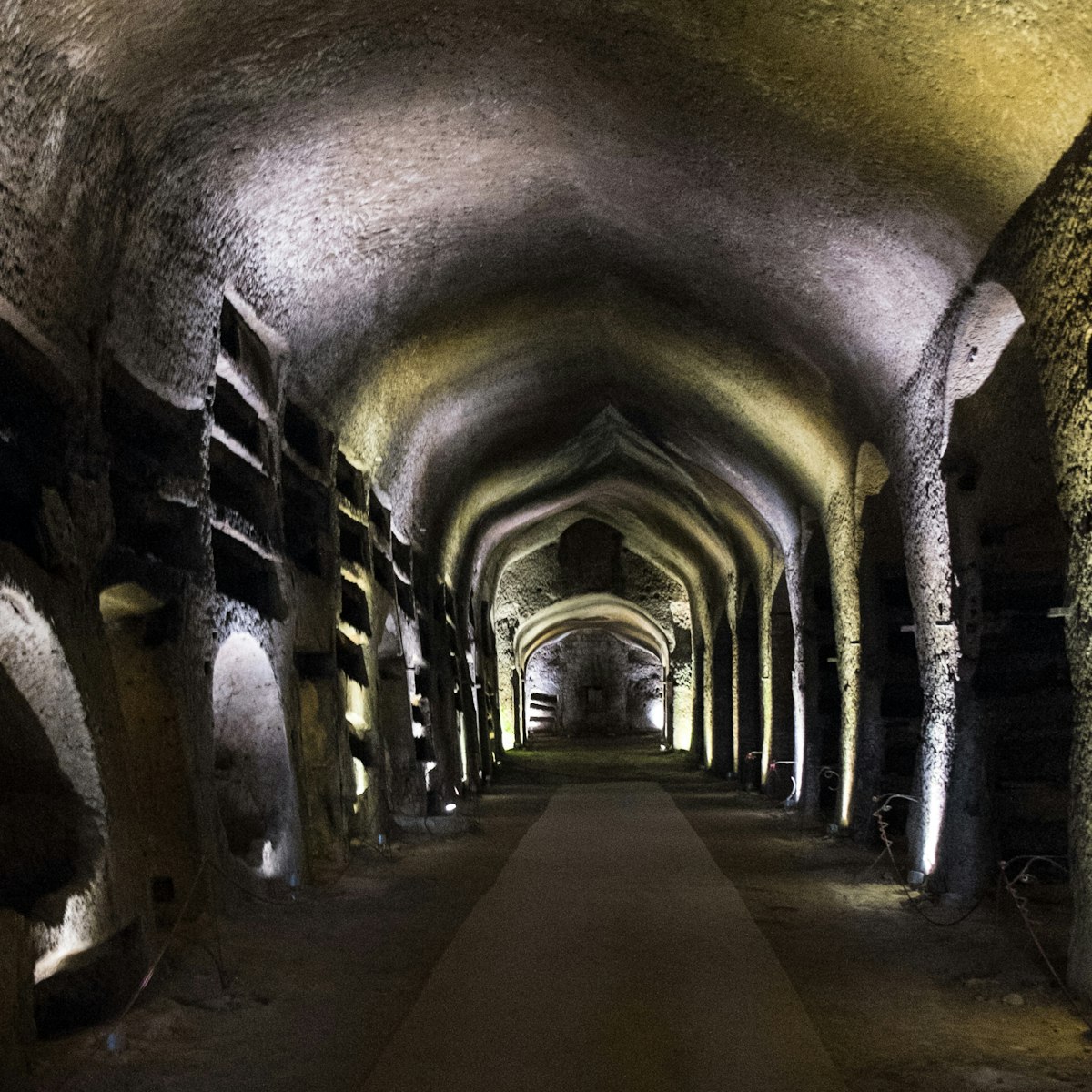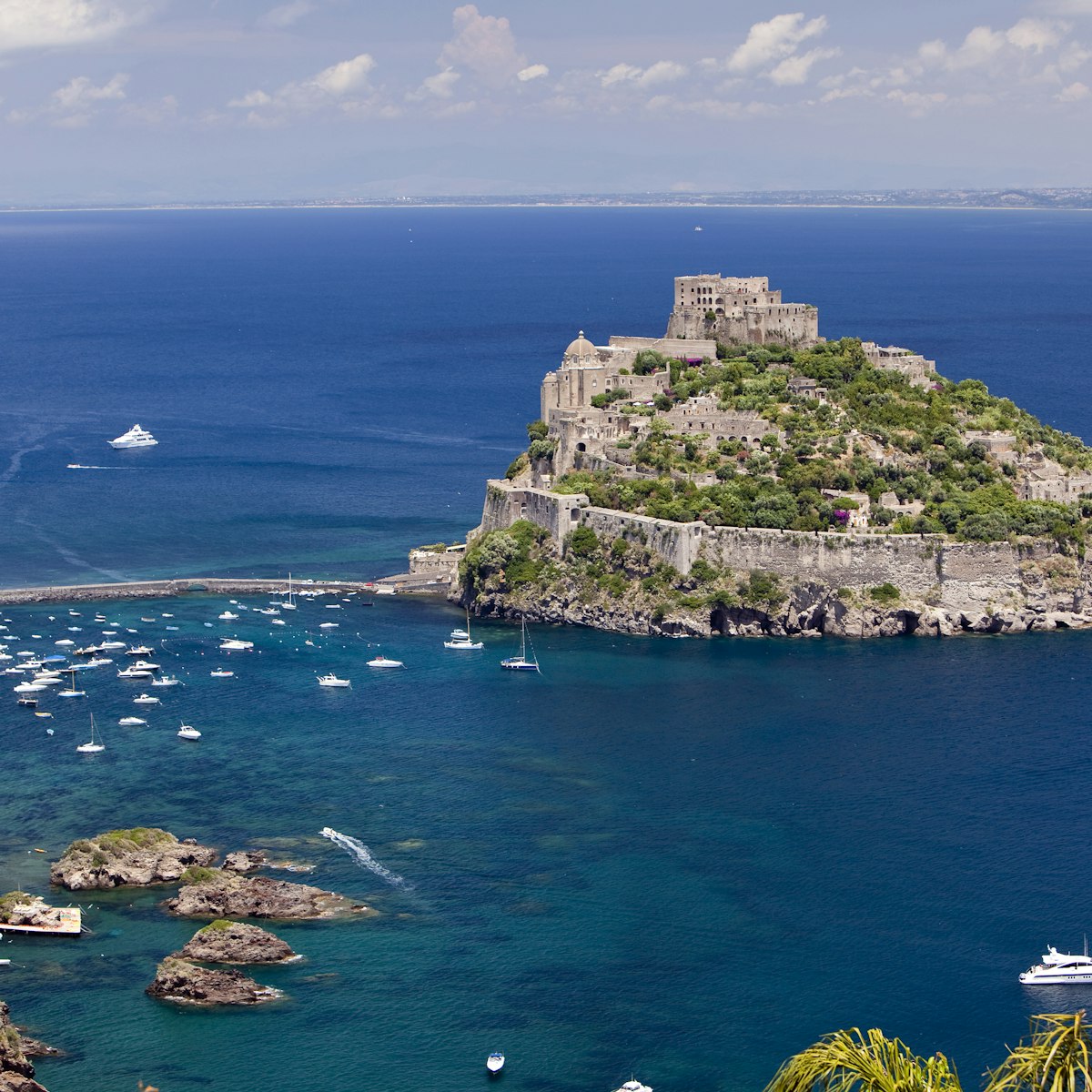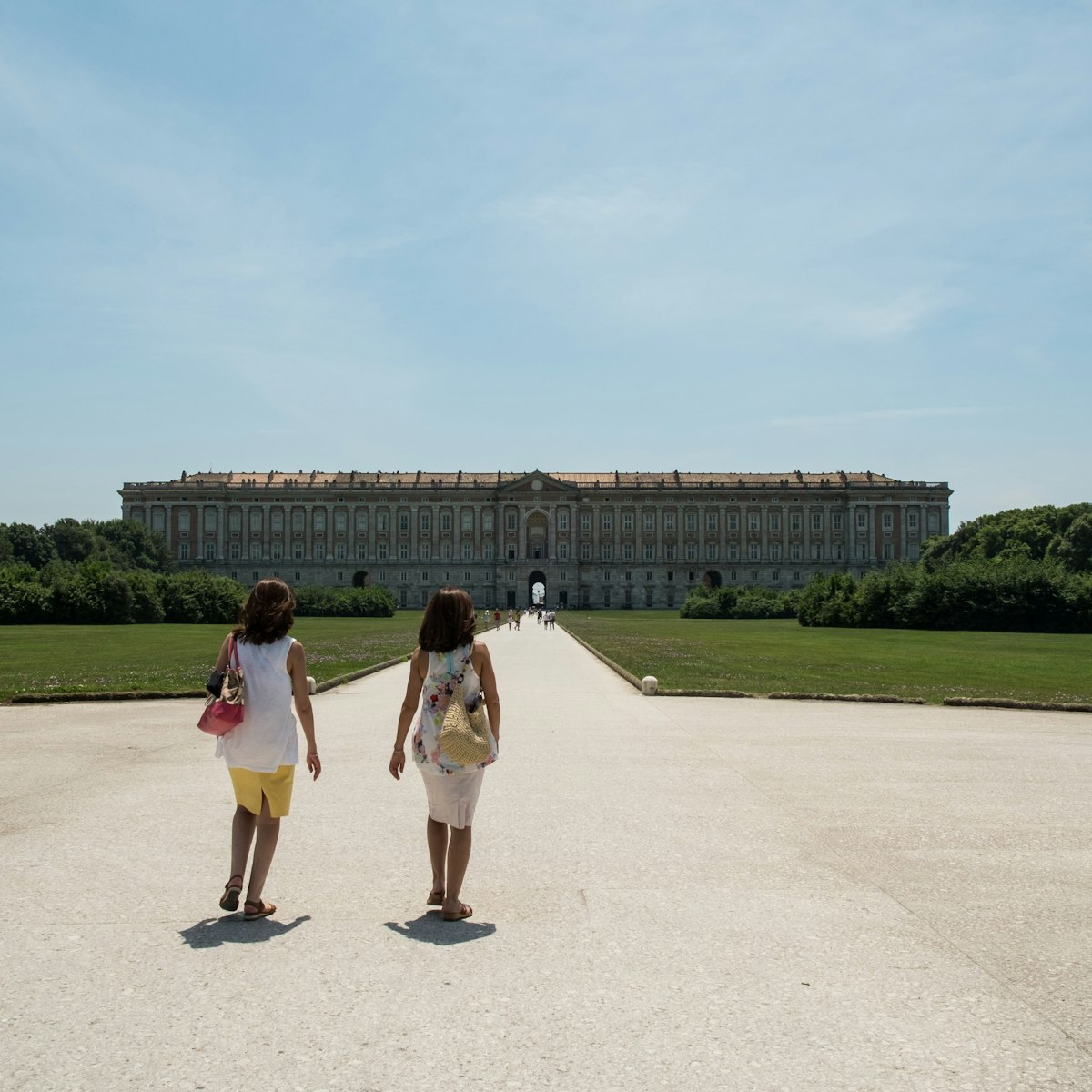Herculaneum harbours a wealth of archaeological finds, from ancient advertisements and stylish mosaics to carbonised furniture and terror-struck skeletons. Indeed, this superbly conserved Roman fishing town of 4000 inhabitants is easier to navigate than Pompeii, and can be explored with a map and highly recommended audio guide (€8).
To reach the ruins from Ercolano–Scavi train station, walk downhill to the very end of Via IV Novembre and through the archway across the street. The path leads down to the ticket office, which lies on your left. Ticket purchased, follow the walkway around to the actual entrance to the ruins, where you can also hire audio guides.
Herculaneum's fate runs parallel to that of Pompeii. Destroyed by an earthquake in AD 62, the AD 79 eruption of Mt Vesuvius saw it submerged in a 16m-thick sea of mud that essentially fossilised the city. This meant that even delicate items, such as furniture and clothing, were discovered remarkably well preserved. Tragically, the inhabitants didn't fare so well; thousands of people tried to escape by boat but were suffocated by the volcano's poisonous gases. Indeed, what appears to be a moat around the town is in fact the ancient shoreline. It was here in 1980 that archaeologists discovered some 300 skeletons, the remains of a crowd that had fled to the beach only to be overcome by the terrible heat of clouds surging down from Vesuvius.
The town itself was rediscovered in 1709 and amateur excavations were carried out intermittently until 1874, with many finds carted off to Naples to decorate the houses of the well-to-do or ending up in museums. Serious archaeological work began again in 1927 and continues to this day; with much of the ancient site buried beneath modern Ercolano, it's slow going.
Note that at any given time some houses will invariably be shut for restoration.
